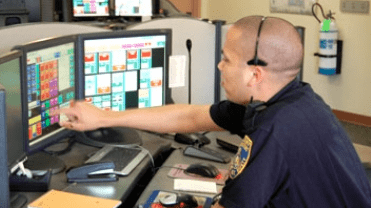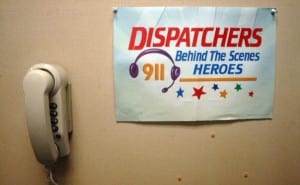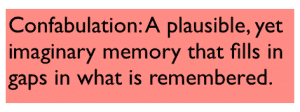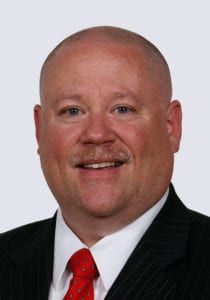 Some of the least appreciated members of the emergency response team are the communications specialists (in some venues, termed dispatchers). How do I know this? First, I served as a communications specialist (my job title was “dispatcher”) early in my career and I was routinely subjected to criticism and ridicule from responders because the information I shared with them wasn’t always accurate – like I was giving them misinformation on purpose.
Some of the least appreciated members of the emergency response team are the communications specialists (in some venues, termed dispatchers). How do I know this? First, I served as a communications specialist (my job title was “dispatcher”) early in my career and I was routinely subjected to criticism and ridicule from responders because the information I shared with them wasn’t always accurate – like I was giving them misinformation on purpose.
Second, in the situational awareness classes I teach, I often hear the same criticism of communications specialists I endured almost 30 years ago. I would like to offer some perspective on communications specialists and the critical role they can play in forming and maintaining situational awareness for responders.
How situational awareness is formed
Situational awareness begins by gathering information using your senses (seeing, hearing, feeling, tasting and smelling). This beginning stage in the formation of situational awareness is termed “perception.” Then, the information you perceive must be understood in your brain. This is termed “understanding.” Finally, once you understand what is happening, you draw from past experience and training to help you forecast the future. This is termed “prediction.”
This article focuses on the first two components in the formation of situational awareness – perception and understanding – and even more restrictive, we are going to explore only one sensory input (hearing).
“9-1-1, what is your emergency?”
Unless you’ve ever served as a communications specialist/dispatcher, you likely have little understanding or appreciation for how difficult it can be to gather accurate, coherent, timely information from a frantic caller who may be scared, confused and/or angry. For most callers, when placing a call to 9-1-1, the event has occurred that is stressful and emotions are running amuck. It is very likely the situational awareness of the civilian caller is being impacted by many of the same barriers that can flaw a responder’s situational awareness – only worse because civilians are not used to dealing with emergencies.
 I have been on the receiving end of many frantic
I have been on the receiving end of many frantic
9-1-1 calls. Sometimes the person on the other end of the phone cannot even speak in sentences and often times they scream! For some reason, under stress, people think that if they scream, the receiver of the message will understand them better – not unlike what we sometimes observe from responders under stress at emergency scenes. As stress goes up, so often does the volume of modulation.
As the communications specialist hears the stress and anxiety in the voice of the caller, it is a natural response for the specialist’s stress hormones to be released and for the specialist’s stress level to rise as well – not unlike how an excited company officer or commander can convey their stress and anxiety over the radio and impact the stress and anxiety levels of other responders who are listening to the radio.
Painting the picture
As the caller describes the emergency to the communications specialist/dispatcher, they are providing verbal clues and cues – information – that form the situational awareness of the dispatcher about what is happening. Stated another way, the caller is “painting a picture” on the mind of the dispatcher about what is happening. When the caller’s information is incomplete or the caller cannot be understood (from stress or perhaps a language barrier), there will be “holes” in the dispatcher’s picture of understanding.
 As all humans do when faced with incomplete information, the communications specialist’s brain then kicks in and evokes one of two responses. First, the specialist may be “confused” about what is happening as a result of the incomplete information and continue to ask the caller questions to gain clarification… to “fill-in” the missing pieces of information with facts. Sometimes the facts can be extracted from a caller and sometimes they cannot.
As all humans do when faced with incomplete information, the communications specialist’s brain then kicks in and evokes one of two responses. First, the specialist may be “confused” about what is happening as a result of the incomplete information and continue to ask the caller questions to gain clarification… to “fill-in” the missing pieces of information with facts. Sometimes the facts can be extracted from a caller and sometimes they cannot.
In the absence of complete and accurate information, the specialist’s brain may kick in the second possible response and “fill-in” the missing information with assumptions. These assumptions may be accurate or they may be completely inaccurate. The problem is, when the specialist’s brain fills in the missing information with assumptions, it is very likely they will not know it is happening.
If a specialist’s brain fills-in the missing information with a false assumption, they may, in turn, relay that false information to responding units as if the information is factual. When the responders arrive on the scene and conduct a size-up they quickly realize the information shared with them from the specialist is not accurate. That’s IF… the arriving crews actually conduct an accurate size-up and do not fall prey to thinking they already know what’s going on based on the report from the communications center.
Confabulation
The brain is so good at filling in the missing information that neuroscientists dedicate a lot of time to studying the phenomenon. The term used in neuroscience to describe the brain’s “fibbing” is Confabulation. When you couple stress with incomplete information in a situation that involves urgency, it becomes the perfect environment for the brain to confabulate. When a person is confabulating, their brain is, essentially, lying to them. The person then, in turn, can tell a story that is full of untruthful information. Yes, they are, essentially, lying… but they won’t know they’re doing it.
Side note: I once had a boss who was a master confabulator. He would say I told him things that I never said. Further, he would say he told me things that he never said. It drove me crazy because I thought he was trying to manipulate me intentionally. At the time, I did not understand the phenomenon of confabulation. The way I dealt with it was I learned I needed to put everything in writing and keep copies because he either didn’t read it or if he did, he forgot he had read it and confabulated a different reality in his mind.
 Confabulation is not a phenomenon exclusively afflicting communications specialists/dispatchers. In the emergency services world, all responders are vulnerable to confabulate. I have witnessed this and I have been also been the victim of it.
Confabulation is not a phenomenon exclusively afflicting communications specialists/dispatchers. In the emergency services world, all responders are vulnerable to confabulate. I have witnessed this and I have been also been the victim of it.
As a humorous anecdote, I was explaining this phenomenon in a class once and one of the participants noted: This happens in the firehouses, too. We all know firefighters who never let the truth stand in the way of telling good stories. While this is so true, there is a difference between embellishing the truth for the sake of humor (or in some cases to damage another person) and confabulation. The former is done consciously and with intent. The latter is done subconsciously and without intent.
Triangulation
One of the ways to sort through misinformation and to combat the effects of confabulations is to triangulate the data. This means to gather data from various sources or points of view and then compare and contrast them to see where overlaps occur.
Granted, this is not always possible in the time-compressed environment of emergency scenes. However, a talented communications specialist/dispatcher can gather information from 2-3 callers and sort out the common (overlapping) information. The information gathered from a previous caller can also prompt the specialist/dispatcher to ask more direct questions of subsequent callers.
Too much information
The safety of responders is improved when they are supplied with accurate information, although there can be a point where too much information can be shared. This can overwhelm the mental processors, especially under stress. In reality, there is only a small amount of information needed to form an awareness about the call and how to prepare. Some specialists/dispatchers share everything the caller says. This “oversharing” can lead to responder information overload.
I can think of a few times (while responding) when a specialist/dispatcher shared information with me and I thought to myself… “Ok, I didn’t need to know that.” When they are oversharing, it may be because they are trying to be helpful or it may be because the specialist/dispatcher does not understand the street-responder’s job well enough to know what information is essential and what information is not.
Pre-Arrival Lens
The information shared by communications specialists/dispatchers with responding personnel forms the pre-arrival lens. The pre-arrival lens, essentially, is the visual picture of understanding painted on the mind of responders using the words of the specialist/dispatcher. Too few words and there will be empty spots (holes) on the canvas of understanding. Too many words and the canvas becomes an incomprehensible blob of colors, shapes, and textures.
Dr. Gasaway’s Advice
 I am continually amazed at how many first response organizations do not see their communications specialists/dispatchers as an integral component of their success. I have talked to scores of departments that have trained their personnel on accountability, mayday operations, and rapid intervention. This training has included countless hours of hands-on drills. And yet, in many instances, the specialists/dispatchers were never involved in any of the drills. This is shameful.
I am continually amazed at how many first response organizations do not see their communications specialists/dispatchers as an integral component of their success. I have talked to scores of departments that have trained their personnel on accountability, mayday operations, and rapid intervention. This training has included countless hours of hands-on drills. And yet, in many instances, the specialists/dispatchers were never involved in any of the drills. This is shameful.
Remember, the communications specialist/dispatcher operates in a much less dynamic environment, often in less noise than an emergency scene and often wearing a radio headset. Because the specialist/dispatcher relies entirely on their ears and does not have to process the meaning of critical information visually (i.e., there is no burning building for the specialist/dispatcher to be looking at), they have a distinct advantage when it comes to forming an understanding from verbal information.
While those operating at an emergency scene must often process the meaning of visual and audible information simultaneously, the specialist/dispatcher only has to process the meaning of audible information. Let me make a point of clarification: In the formation of situational awareness, it is better to be able to see AND hear clues and cues simultaneously, but it can also lead to overwhelm (especially when something goes awry).
There have been many documented instances where a specialist/dispatcher heard mayday or distress calls over the radio that the incident commander did not hear. Having a dispatcher as a second set of ears is an invaluable resource.
Involve the specialists/dispatchers in training for critical operations. We all know that if the proverbial crap hits the fan, the dispatcher is going to play an important role in helping us manage the information and arrange additional resources. So, involve them in the “crap-hitting-the-fan” training scenarios.
Invite the communications specialists/dispatchers to do a ride-along. We can take for granted that specialists/dispatchers know a whole lot more about our field operations than they really do. If we do not give them direct exposure to our world then where are the they to go to learn about our operations? Movies? TV Shows? I think you can see how that might not work so well.
Action Items
 1. When faced with a scenario where a communications specialist/dispatcher does not provide accurate information for a call, follow up with the specialist/dispatcher to gain perspective about how he or she came to believe the information being shared was accurate.
1. When faced with a scenario where a communications specialist/dispatcher does not provide accurate information for a call, follow up with the specialist/dispatcher to gain perspective about how he or she came to believe the information being shared was accurate.
2. Develop a program for communications specialists/dispatchers to ride along with operational units.
3. Develop a program where company and command personnel spend time in a communications/dispatch center.
4. Develop a training program to teach communications specialists/dispatchers the fundamentals of emergency operations.
5. Involve communications specialists/dispatchers in critical training evolutions so they can practice their communications and hone their support skills.
About the Author
Richard B. Gasaway, PhD, CSP is widely considered a trusted authority on human factors, situational awareness and the high-risk decision making processes used in high-stress, high consequence work environments. He served 33 years on the front lines as a firefighter, EMT-Paramedic, company officer, training officer, fire chief and emergency incident commander. His doctoral research included the study of cognitive neuroscience to understand how human factors flaw situational awareness and impact high-risk decision making.
_____________________________________________________

If you are interested in taking your understanding of situational awareness and high-risk decision making to a higher level, check out the Situational Awareness Matters Online Academy.
CLICK HERE for details, enrollment options and pricing.
__________________________________
Share your comments on this article in the “Leave a Reply” box below. If you want to send me incident pictures, videos or have an idea you’d like me to research and write about, contact me. I really enjoy getting feedback and supportive messages from fellow first responders. It gives me the energy to work harder for you.
__________________________________________________
Let’s Get connected
Facebook: SAMatters
LinkedIn: Rich Gasaway
LinkedIn: Situational Awareness Matters
Twitter: Rich Gasaway
Youtube: SAMattersTV
itunes: SAMatters Radio
Stitcher Radio: SAMatters Radio
Google Play: SAMatters Radio
iHeart Radio: SAMatters Radio

